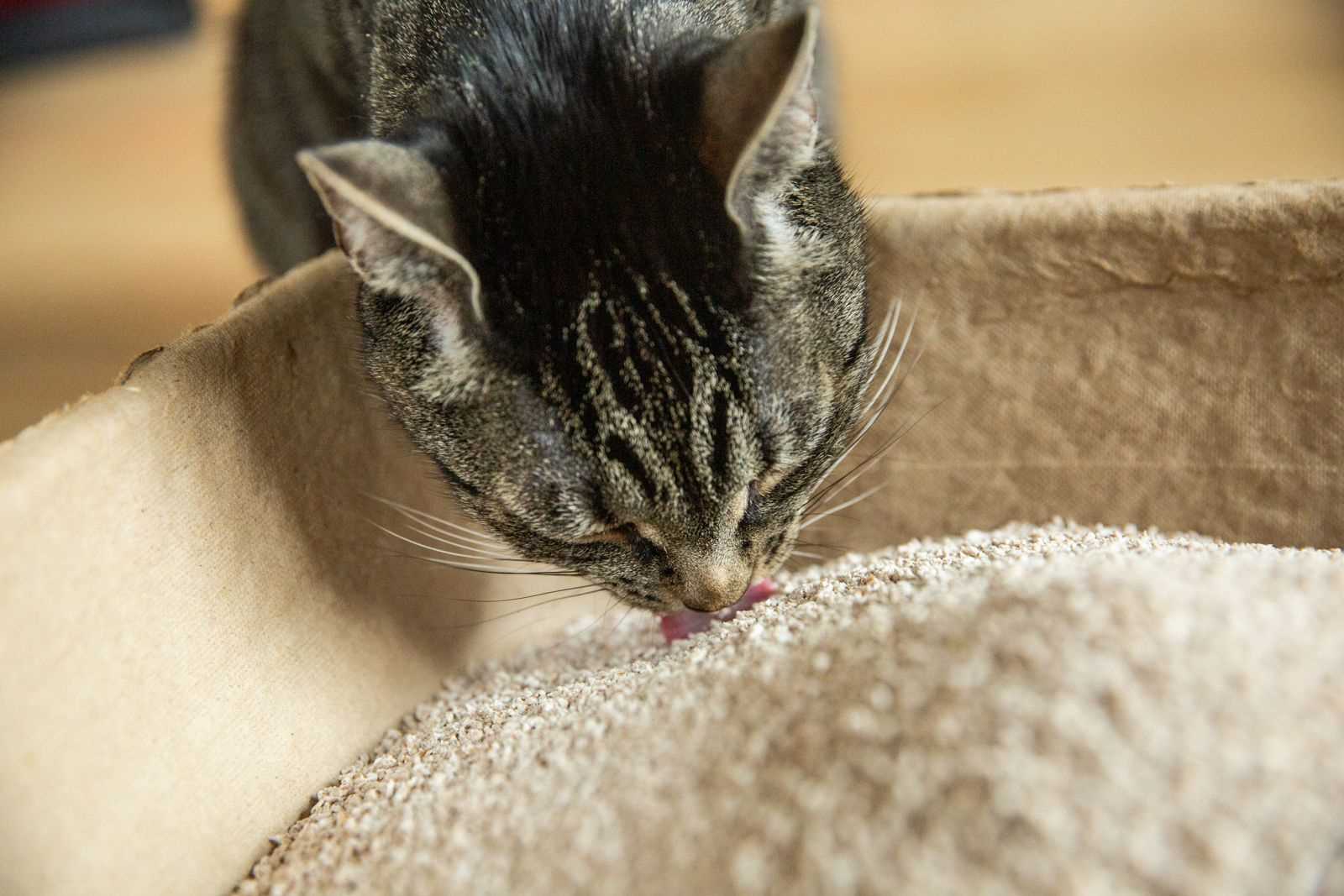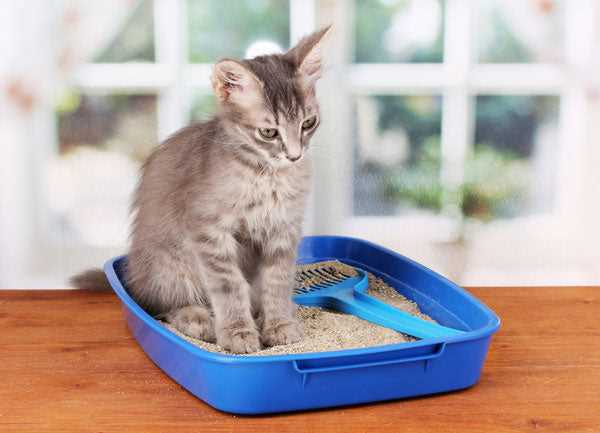



It’s not uncommon for young felines to show interest in the substrate used in their litter boxes. This behavior often arises from natural instincts, where the texture and scent may mimic elements found in their environment. As a Scottish Fold who has observed many young ones, I’ve noticed that this curiosity can stem from a desire to explore and understand their surroundings.
One possible explanation for this peculiar habit is the need for sensory exploration. Young cats are naturally inclined to investigate different materials with their mouths. The grainy texture of the pellets can attract playful felines, leading them to nibble on it. It’s important to ensure that the chosen substrate is made from safe, non-toxic materials to prevent any health issues.
Additionally, this behavior may indicate a nutritional deficiency. If a young feline is lacking certain minerals or fibers in their diet, they might instinctively turn to non-food items. Monitoring their eating habits and consulting with a veterinarian can help address any underlying nutritional concerns.
As a seasoned observer, I recommend providing plenty of safe toys and engaging activities to redirect this exploratory behavior. Ensuring a balanced diet and frequent playtime can satisfy their natural instincts without resorting to the litter box. By understanding these motivations, we can help young companions thrive in a safe and nurturing environment.
Understanding the Behavior
Noticing your little furball munching on the substrate can be concerning. The reasons behind this quirky habit can be quite varied. Here are some insights to consider:
- Curiosity: Young felines are naturally inquisitive. They explore their environment with all their senses, including taste.
- Nutritional Deficiencies: Sometimes, a lack of certain minerals or nutrients can lead to unusual eating habits. Ensure their diet is balanced with essential vitamins.
- Texture Exploration: The feel of the granules may be interesting to them. Some might enjoy the crunch or texture under their paws and mouths.
- Stress or Anxiety: A change in surroundings or routine can trigger stress, leading to unusual eating behaviors. Creating a calming environment can help.
Prevention Tips
To discourage this behavior, consider the following:
- Provide a balanced diet tailored to their growth stage.
- Offer plenty of toys and engage in playtime to keep them occupied.
- Ensure their litter box is clean and appealing, as cleanliness can reduce the temptation.
- If the behavior persists, consult a veterinarian to rule out health issues.
In addition to monitoring their habits, maintaining their overall health is crucial. For example, using the best flea medicine for cats without vet prescription walmart can help keep them healthy and comfortable.
Understanding Natural Instincts
Observe closely; the young ones often mimic behaviors they see. This imitation is crucial for their development. They learn from their environment and the adults around them. Providing diverse experiences helps shape their instincts positively.
It’s essential to create a safe space filled with stimulating toys and appropriate materials. This encourages exploration and reduces the likelihood of undesirable habits. Monitor interactions with various textures and substances. This can direct their focus toward suitable items rather than harmful ones.
Nutrition plays a key role as well. A balanced diet impacts their health and behavior. If they lack certain nutrients, they may seek out alternative sources, sometimes turning to inappropriate items. Regular check-ups with a vet can ensure their dietary needs are met.
| Common Reasons | Recommendations |
|---|---|
| Mimicking behavior | Encourage play with safe toys |
| Nutritional deficiencies | Consult a vet for diet plans |
| Exploration | Provide safe items for exploration |
| Stress or boredom | Engage in regular playtime |
By understanding their instincts and providing the right environment, we can guide the little ones toward healthy habits and prevent them from exploring harmful options.
Types of Cat Litter That Attract Felines
Choosing the right substrate can significantly influence the behavior of young furballs. Here are some options that tend to draw their attention:
Clay-Based Options: Traditional clay types, particularly clumping varieties, appeal due to their texture. The gritty feel mimics natural ground materials, which can be enticing to explore.
Natural and Organic Choices: Substrates made from materials like corn, wheat, or pine are often more appealing due to their organic nature. The scent of these products may trigger curiosity and encourage interaction.
Silica Gel Crystals: The unique texture of silica gel can attract young ones, as they may enjoy the crinkly sound when they walk or play on it. This type also absorbs moisture efficiently, keeping the area dry.
Recycled Paper Products: Soft and lightweight, paper-based litters can offer a gentle surface that tends to be inviting. The absence of strong fragrances makes them suitable for sensitive noses.
Herbal or Scented Variants: Some litters include natural herbs like catnip, which can stimulate interest. The smell may encourage playful exploration, making it a more engaging option for small explorers.
Experimenting with these different types of substrates can help determine which one captures attention and keeps little ones entertained while maintaining a clean environment.
Health Risks Associated with Ingesting Cat Litter
Ingesting substrate can lead to various health issues. Here are specific risks to consider:
Gastrointestinal Irritation
When a feline consumes this material, it can cause irritation in the digestive tract. Symptoms include:
- Vomiting
- Diarrhea
- Abdominal pain
Toxic Ingredients
Some types of substrate contain harmful chemicals or additives. These substances can result in:
- Poisoning
- Liver damage
- Nervous system issues
Consuming litter made from clay can lead to potential blockages in the intestinal tract. This may require surgical intervention if not addressed promptly.
Observe signs of distress or unusual behavior and consult a veterinarian if ingestion occurs. Early detection is key to preventing severe complications.
Behavioral Reasons Behind Litter Consumption
Some youngsters might munch on litter out of sheer curiosity. Exploring textures and smells is a natural way for them to understand their surroundings. It’s similar to how they investigate toys or other objects. The texture of certain substrates can be fascinating and may even resemble the feel of prey.
Another factor is the instinct to mimic adult felines. Young ones often watch and imitate older cats, picking up behaviors that may not always make sense to us. If an adult cat shows interest in the litter box, the young one might follow suit, thinking it’s playtime or something interesting to engage with.
Stress and Anxiety
Sometimes, anxiety or stress can lead to unusual habits. Unfamiliar environments or changes in routine might trigger this behavior. If a little one feels insecure, they may resort to consuming non-food items as a coping mechanism. Providing a consistent environment can help reduce this tendency.
Nutritional Deficiencies
A lack of certain nutrients in their diet may prompt them to seek alternative sources. If a young feline is not getting enough minerals or vitamins, they might instinctively turn to litter as a way to fulfill these needs. Ensuring a balanced diet is crucial to prevent this behavior.
How to Discourage Little Ones from Consuming Substrate
First, provide a designated play area with engaging toys. This diverts attention away from unwanted materials. Incorporate interactive elements like feather wands and laser pointers to stimulate their curiosity and energy.
Consider using a different type of substrate that has a less appealing texture or scent. Opt for non-clumping varieties or those made from natural ingredients that discourage ingestion. Experiment with various options until you find one that holds their interest less.
Ensure they have plenty of appropriate chew toys. Choose items made from safe materials that encourage chewing, such as rubber or soft fabric. This satisfies their urge to gnaw without resorting to harmful substances.
Maintain a clean and tidy environment. Regularly scoop and change the substrate to minimize the attraction of any foreign elements. A fresh space helps in keeping them focused on the right items.
Monitor their behavior closely. If they exhibit persistent interest in the wrong materials, gently redirect them with a firm “no” and guide them to accepted alternatives. Positive reinforcement such as treats or affection when they choose appropriate items can strengthen good habits.
If concerns persist, consulting a veterinarian for tailored advice is beneficial. They can provide insights into possible underlying issues or behavioral modifications.
For some tasty inspiration for snack time, check out how to cook juicy chicken breast skillet.
Signs of Nutritional Deficiencies in Young Felines

If you notice unusual behaviors in your furry friend, it might be linked to inadequate nutrition. Watch for signs like lethargy and lack of playfulness, which can indicate low energy levels. A dull coat or excessive shedding may suggest a deficiency in essential fatty acids or proteins.
Changes in appetite, whether increased or decreased, can signal underlying issues. If the little one is eating less, it might be due to vitamin or mineral shortages. On the other hand, an increased craving for food might indicate an attempt to compensate for missing nutrients.
Digestive problems, such as diarrhea or vomiting, often arise from unbalanced diets. Keep an eye on their stool; abnormalities could reflect poor nutrient absorption. Additionally, weight loss or failure to gain weight adequately points to possible deficiencies, requiring urgent attention.
Behavioral shifts, like increased aggression or anxiety, can also be traced back to nutritional gaps. These changes may stem from a lack of critical vitamins that support mental health. Regular veterinary check-ups can help identify these issues early and ensure a balanced diet is being provided.
Monitoring these signs closely can lead to timely interventions, ensuring a healthier and happier life for your little companion.
When to Consult a Veterinarian About Litter Consumption
If you notice unusual behavior related to substrate ingestion, it’s time to seek professional help. Indicators such as persistent gastrointestinal upset, lethargy, or changes in appetite warrant immediate attention from a vet.
Physical Symptoms to Watch For

Watch for vomiting, diarrhea, or signs of discomfort. Persistent changes in bowel movements or difficulty in passing stool can signal a serious issue. If these symptoms develop, a veterinary visit is essential.
Behavioral Changes
If there is a sudden shift in behavior, such as increased anxiety, aggressive tendencies, or excessive grooming, it’s advisable to consult a veterinarian. These changes may indicate underlying health problems that need to be addressed.










